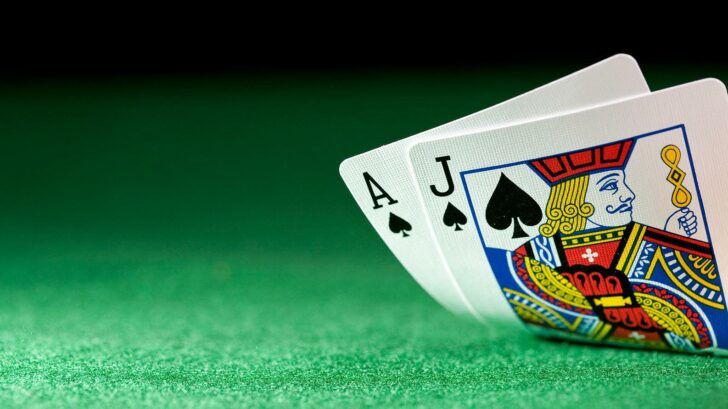Why Understanding the Number of Decks is the Key to Winning at Blackjack

Many beginning blackjack players don’t think about the number of decks, but it has a huge impact on the house edge.
Most casino games have a straightforward house edge. In roulette, it’s 17 percent if playing the American version. In slots the house edge can very but is preset and can’t be affected by the house or the player. Blackjack is different. The casino can tinker with the rules to funnel more money into the house’s pocket. The player can use advantage techniques to give himself an edge over the casino.
Blackjack is a cat-and-mouse game, a push-and-pull where both sides try to lure the other into a game where the cards are stacked against them. As the player, it’s important to know when the cards are stacked against you, and when they’re in your favor.
One of the most important blackjack rules variations which affect the house edge is one of the easiest to ignore: the number of decks during the course of the game. If you’re interested in winning at blackjack, it’s crucial that you understand this factor and learn to use it to your advantage.
What does the number of decks have to do with it?
In the old days blackjack games were dealt from a single deck and usually the cards weren’t shuffled until the deck ran out. This suited the casino just fine, as players weren’t yet sophisticated enough to effectively anticipate the outcome of upcoming hands. The invention of advantage play techniques, especially card counting systems, led directly to the creation of multi-deck or “shoe” games in casinos.
A standard single-deck game will have a house edge of about .25 percent, if the rules haven’t been tweaked to make things harder for the player (which is why a lot of single-deck games pay only 6:5 on blackjack these days). By contrast, a six-deck game generally has a house edge of about .53 percent, and an eight-deck game somewhere between .6 and .65 percent, depending on the other rule variations.
This is because dealing from more decks means that the deck penetration will be lower; fewer cards will be dealt out of each deck before it is replaced with the next pack coming out of the shoe. Most blackjack players know the general rule that more decks mean a higher house edge and a worse deal for them, but few know why.
The mechanics of the number of decks
There are three main reasons why dealing fewer cards from each deck is better for the casino: fewer stiff hands, fewer blackjacks and fewer double downs. Each stems from the fact that on average dealing fewer cards means dealing more low cards. High cards are left in the deck where they can’t help the player win. The ratio of low to high cards affect the player as well as the house, but in the long-run will hurt the casino’s wallet more.
A stiff hand refers to any number between 12 and 16. According to blackjack strategy, these put the player in purgatory, as he needs to hit but has a decent chance of busting. It’s worse for the dealer, however. Depending on the dealer’s upcard the player can choose to stand and still have a decent of winning. The dealer has to hit, and is going to bust a good amount of times.
Dealing fewer high cards means fewer blackjacks, both for the dealer and the player. This is good for the casino because they’re obligated to pay 3:2 (or 6:5) on a blackjack by the player, whereas the house takes even money on a dealer blackjack.
The final factor is the most complicated. Dealing fewer cards from each deck means fewer double downs on the part of the player (this is an opportunity which the dealer doesn’t get to partake in). The double down is a move in which the player recognizes that he has a high chance of winning, so doubles his bet while agreeing to be dealt only one additional card.
This is usually done when the player either has a soft hand (including an ace) or needs only a face card to land a 20 or 21. These are both situations when the player has a very strong chance of winning, so it’s in their interest to get as much money on the table as possible.
As a higher deck number means fewer high cards, there will be fewer situations when the player is dealt an ace (so fewer soft hands) and when he does choose to double down, he is less likely to land the face card he needs to beat the dealer.
How to spot the best table in a casino
As a general rule the player should seek out tables with lower deck numbers. But these days most single-deck games are rigged to make it difficult for the player to win. Six or eight deck games are the most commonly found, but we advise you to be on the hunt for games dealt from two to four decks.
The number of decks is crucial, but it isn’t the only factor in play when choosing a table. You need to consider each of the rule variations in play, like whether the dealer hits on a soft 17 or whether you can double down after splitting your hand.




